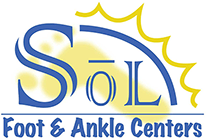 My child has taken up club soccer. Why does his heel hurt?
My child has taken up club soccer. Why does his heel hurt?
Heel pain is a common problem in children between the ages of 8 and 13 (usually a bit earlier in girls than in boys). It is most commonly caused by a painful phenomenon known as Sever’s Disease or Apophysitis.
The condition can be a bit confusing and is often misdiagnosed as plantar fasciitis or simply brushed off as “growing pains”.
However, Sever’s disease is actually a unique condition involving the growth of the heel bone (calcaneus). In many children the growth of the heel bone outpaces the growth of the surrounding ligaments, tendons and muscles as well as the circulation to the heel bone itself.
This places an excessive amount of stress on the heel bone and makes it more vulnerable to injury. Even normal activities, such as running and jumping, can cause the heel to become quite painful.
What does this have to do with soccer?
The symptoms of Sever’s disease are seen most often in youth sports that involve running and jumping such as soccer and football. Children may complain of heel pain, tightness and the feeling of a bruise on their heel. Children who play sports that involve long periods of running and jumping are much more likely to suffer the effects of Sever’s disease.
In addition, children’s soccer cleats typically are very hard and do not have enough support for their developing feet. This further exacerbates the problem. When you add in the vigorous practice and tournament schedule of club soccer you have the perfect recipe for heel pain caused by Sever’s disease.
Treatment For Sever's Disease
The pain from Sever’s disease usually occurs as the foot strikes the ground during running and can often be more severe immediately after playing. The best treatment is rest – reducing the trauma on the feet allows the stress on the heel bone to resolve. Calf stretches, icing and foot orthotics can also be helpful.
In severe cases immobilization in a boot or cast can help to get the pain under control. The good news about Sever’s disease is that most children literally do “outgrow” the problem. The bad news is that it can take anywhere from six months to two years to completely resolve.
If your child is suffering from heel pain then the club soccer schedule may be a bit too vigorous. Consider some time off from running in soccer cleats and definitely consult a podiatrist for the best treatment for your child's heel pain. This can make a big difference in getting the pain under control and helping your child get back to playing the sport he loves!
Schedule an appointment by calling 562-433-0478. Our doctors and team of professionals at Sol Foot & Ankle Centers are dedcitated to keeping your feet healthy and pain-free.

